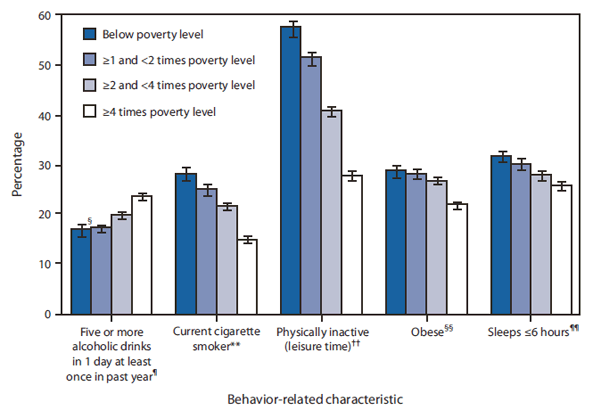* Poverty status is based on family income and family size using the U.S. Census Bureau poverty thresholds for 2004, 2005, and 2006. Family income was imputed when information was missing, using multiple imputation methodology.
† Estimates are age adjusted using the projected 2000 U.S. population as the standard population and three age groups: 18--44 years, 45--64 years, and ≥65 years. Estimates are based on household interviews of a sample of the civilian, noninstitutionalized U.S. adult population. Denominators for each percentage exclude persons with unknown behavior-related characteristics.
§ 95% confidence interval.
¶ The question regarding consumption of five or more drinks in 1 day at least once in the past year was asked only of current drinkers (one or more drinks in preceding year); however, prevalence estimates reflect percentage of all adults who engaged in this behavior.
** Smoked at least 100 cigarettes in lifetime and currently smoked.
†† Never engages in any light, moderate, or vigorous leisure-time physical activity.
§§ Defined as a body mass index (weight [kg] / height [m2]) of ≥30.
¶¶ Usual number of hours of sleep in a 24-hour period.
 ShareCompartir
ShareCompartir



